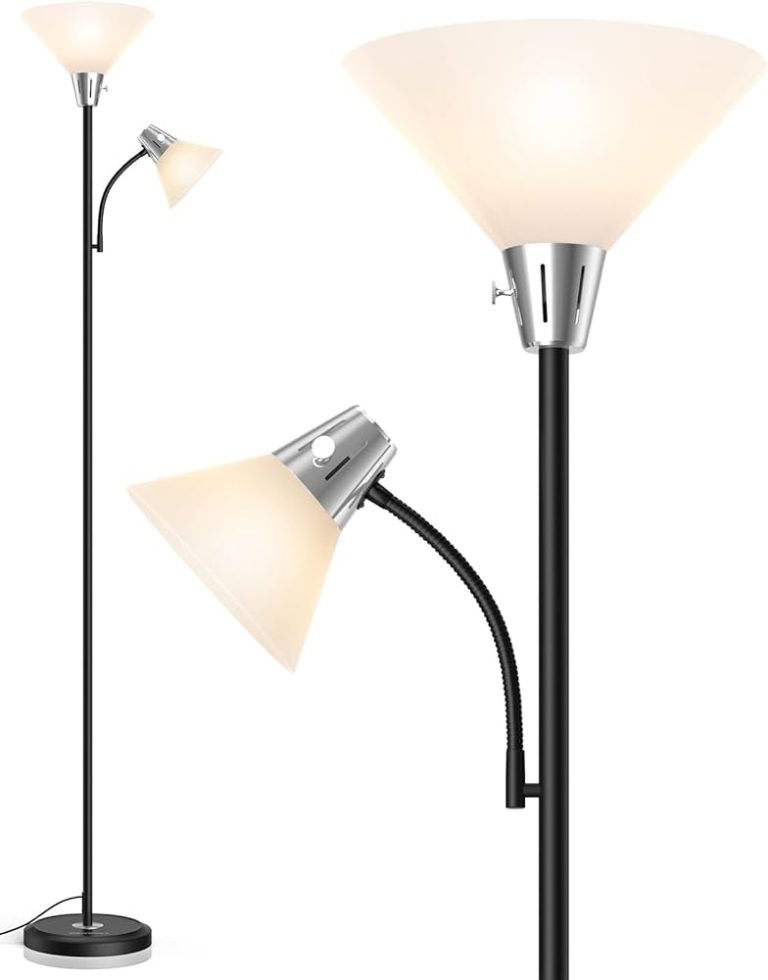9 Best Hair Masks for Healthy, Shiny Hair You Must Try
Your hair deserves the best care, and sometimes shampoo and conditioner just don’t cut it. That’s where hair masks come in, offering deep nourishment and revitalization that can transform your locks from dull to dazzling. Whether you’re dealing with dryness, frizz, or damage, the right hair mask can be a game-changer.
Types of Hair Masks and Their Key Ingredients
Explore different hair masks to discover their benefits and key ingredients.
Protein Masks for Damage Repair
Strengthen damaged hair with protein masks. Key ingredients such as keratin, collagen, and silk amino acids work to repair and fortify each strand. Use these masks if your hair is prone to breakage, especially after chemical treatments or heat styling.
Hydrating Masks for Dry Hair
Moisturize parched hair with hydrating masks. Ingredients like shea butter, argan oil, and hyaluronic acid can deeply nourish your hair, restoring its softness and shine. Apply these masks when your hair feels brittle or looks dull.
Clarifying Masks for Scalp Health
Detoxify your scalp using clarifying masks. With elements like activated charcoal, clay, and apple cider vinegar, these masks effectively remove buildup and excess oil. Incorporate them into your routine to maintain a clean and healthy scalp.
The 9 Best Hair Masks for Various Hair Concerns
Best for Dry Hair
Opt for a hydrating mask like the Amika Soulfood Nourishing Mask. It’s rich in jojoba seed oil and sea buckthorn berry to moisturize parched strands. Use it once a week for the best results.
Best for Oily Scalp
Choose a clarifying mask like the Briogeo Scalp Revival Charcoal + Coconut Oil Micro-Exfoliating Shampoo. This mask uses activated charcoal to detoxify your scalp and balance oil production. Apply it twice a month.
Best for Colored Hair
Protect your color with Moroccanoil Color Depositing Mask. Infused with argan oil, it maintains vibrancy and hydrates. Reapply every two weeks to keep your color looking fresh.
Best for Fine Hair
Try the Kérastase Masque Densité to add volume to fine hair. Its lightweight formula includes hyaluronic acid and gluco-peptide to strengthen without weighing hair down. Use it bi-weekly.
Best for Thick Hair
Manage thick hair with Virtue Recovery Hair Mask. It contains Alpha Keratin 60ku to repair and smooth each strand. Use this mask weekly for softer, more manageable hair.
Best for Curly Hair
Nourish your curls with the SheaMoisture Coconut & Hibiscus Curl Enhancing Smoothie. This mask, packed with neem oil and silk protein, enhances shine and minimizes frizz. Use it as a daily leave-in or weekly treatment.
Best for Damaged Hair
Repair extensive damage with Olaplex No. 3 Hair Perfector. Its patented bond-building technology reconnects broken hair bonds. Apply it once a week for significant improvements.
Best Natural Hair Mask
Choose a natural option like the Mielle Organics Babassu Oil & Mint Deep Conditioner. It’s free of sulfates and parabens, using babassu oil and fatty acids to deeply condition and hydrate. Use it bi-weekly.
Best Affordable Hair Mask
Go budget-friendly with the Garnier Fructis Smoothing Treat 1 Minute Hair Mask + Avocado Extract. This affordable mask smooths and conditions your hair in just a minute, perfect for quick treatments. Use it as needed.
Buying Guide for Selecting the Right Hair Mask
Choosing the right hair mask can be overwhelming, but understanding your hair’s needs can make it easier. Follow this guide to find the perfect mask for you.
Assessing Hair Type and Needs
Identify specific concerns. Review your hair type and its primary issues, such as dryness, frizz, or color damage. Determine whether your hair is thick, fine, curly, or straight, which affects how the mask should perform.
Ingredients to Look For
Prioritize natural ingredients. Look for masks with nourishing components like argan oil (for hydration), keratin (for repair), and aloe vera (for soothing). Avoid harsh chemicals like sulfates, silicones, and parabens that can cause damage over time.
Tips for Using Hair Masks Effectively
Apply correctly. Use masks on clean, damp hair, starting from the ends and working upwards. Leave the mask on for the recommended time, usually 10–30 minutes. Rinse thoroughly with cool water to seal the hair cuticle, enhancing shine and moisture retention.
By assessing your hair type, choosing the right ingredients, and using the mask effectively, you’ll achieve the best results for healthier, revitalized hair.
Application Tips for Maximum Benefits
Knowing how to apply hair masks correctly ensures you get the most out of your investment. Follow these tips for the best results.
How Often to Use Hair Masks
Use Hydrating Masks Weekly. If your hair is dry or damaged, apply a hydrating mask once a week to restore moisture.
Opt for Protein Masks Bi-Weekly. For hair needing repair, use protein masks every two weeks to strengthen and rebuild.
Apply Clarifying Masks Monthly. To maintain scalp health, a clarifying mask once a month removes buildup without stripping natural oils.
Steps for Applying Hair Masks Properly
Start with Clean Hair. Wash your hair with shampoo before applying a mask to ensure it can penetrate effectively.
Use the Right Amount. Apply a generous amount of mask, focusing on the mid-lengths to ends, where damage is usually the greatest.
Comb Through Evenly. Use a wide-tooth comb to distribute the mask evenly through your hair, ensuring every strand is coated.
Cover and Wait. Put on a shower cap to lock in heat and let the mask sit for the recommended time, usually 10-30 minutes.
Rinse Thoroughly. Rinse out the mask with lukewarm water, ensuring no residue remains to avoid any build-up or greasiness.
By following these techniques, you’ll enhance the effectiveness of your hair masks, achieving shinier, healthier hair.
FAQs About Using Hair Masks
Hair masks can be game-changers for your hair routine, but you might have some questions. Here are answers to common queries about using hair masks effectively.
Can Hair Masks Replace Conditioners?
No, hair masks shouldn’t replace conditioners. Conditioners are for everyday use, sealing in moisture quickly after shampooing. On the other hand, hair masks provide deep treatment, targeting specific hair concerns like damage or dryness. Using both ensures your hair gets regular moisture and periodic intensive care.
How Long Should You Leave a Hair Mask On?
Leave hair masks on for at least 10-20 minutes, unless specified otherwise. Some masks, especially those with natural ingredients, can be left on longer or even overnight. Always follow the product’s instructions to achieve the best results.
Conclusion
Using the right hair mask can transform your hair from dull and damaged to shiny and healthy. By understanding your hair’s needs and choosing the appropriate type of mask, you can tackle issues like dryness, breakage, and scalp health effectively. Remember to follow the application tips and product instructions for the best results. Make hair masks a regular part of your hair care routine and enjoy the benefits of deeply nourished, revitalized hair.
Frequently Asked Questions
What are the benefits of using hair masks?
Hair masks provide deep nourishment and revitalization for your hair, surpassing the effects of regular shampoo and conditioner. They can target specific hair concerns such as damage, dryness, or scalp health, leading to shinier, healthier hair.
Should hair masks replace my regular conditioner?
No, hair masks should not replace your regular conditioner. They are designed to complement conditioners by providing deeper treatment and addressing specific hair issues more effectively.
How long should I leave a hair mask on?
Generally, you should leave a hair mask on for at least 10-20 minutes. Always follow the product instructions, as some masks allow for longer application times to achieve optimal results.
Can I use hair masks on dirty hair?
For best results, apply hair masks on clean hair. Starting with clean hair ensures that the mask can penetrate the hair shaft more effectively and deliver the intended benefits.
How often should I use a hair mask?
The frequency of use depends on your hair type and the specific mask you’re using. Generally, using a hair mask once a week is recommended, but always follow the product’s guidelines for best results.
How do I properly apply a hair mask?
Start with clean, damp hair. Apply the right amount of hair mask, focusing on the ends and mid-lengths. Comb through your hair evenly to distribute the mask. Wait according to the product instructions, then rinse thoroughly.
Are there different types of hair masks for different hair concerns?
Yes, there are various types of hair masks designed to address specific concerns: protein masks for repair, hydrating masks for moisture, and clarifying masks for scalp health. Choose one that matches your hair’s needs.






